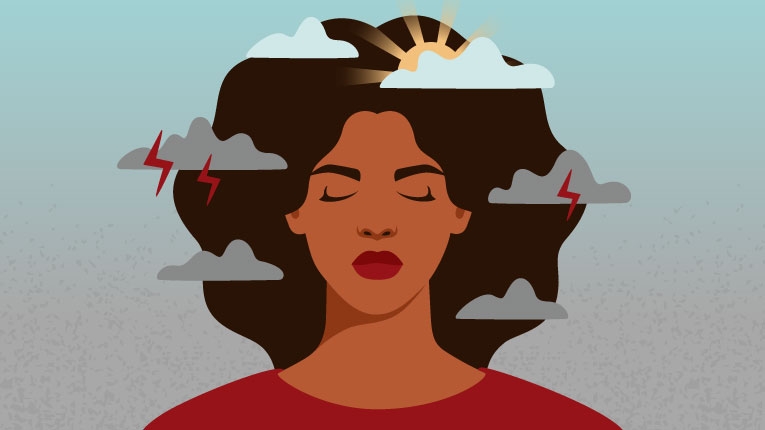Credit report red flags: What to look for & how to dispute errors

Your historical record of on-time bill payments, credit mix, debt utilization, and more, as compiled in your credit report, can have a critical impact on your personal finances and life. That’s because lenders, landlords, insurers, and employers may use this information to predict your future credit behavior, such as how likely you are to repay a loan on time.
Knowing how to read and detect the red flags on your credit report, as well as dispute and correct inaccuracies, could help you maintain or improve your credit score. It could also help you know what changes you might need to make to reach your financial goals faster.
Here’s what you need to know to dig into yours.
What is a credit report and what does it show?
A credit report contains all the information that one of the three major credit bureaus—Equifax, Experian, or TransUnion—has compiled about you.
Each credit bureau, also known as a consumer reporting agency or credit scoring company, maintains credit files filled with personal financial information on millions of people. Your credit report contains historical information about your borrowing and payment habits, including:
Original loan amounts and credit limits
Current loan and credit card balances
Account opening dates
Payment history, including late payments, and accounts in collection
Inquiries into your credit report
Personal information, such as your name, address, and employer
Public records, such as bankruptcy and foreclosure
While all consumer reporting companies collect similar information about you, each one produces its own unique credit report which is also why you can have different credit scores.
How to get your credit report
You can get a free copy of your credit report from all three major credit bureaus at least once every 12 months at AnnualCreditReport.com, although the credit bureaus may allow you to access them more frequently. Some lenders, credit card companies, banks, and credit unions may also provide free access to your credit score as a benefit of being a customer or member.
If you have ever been denied credit for any reason, you have the right to request a free copy of your credit report from the credit bureau the lender used to make its decision. You’re also entitled to one additional free copy of your credit report during any 12-month period if you’re on welfare assistance or are unemployed and seeking employment within 60 days.
Outside of these situations, you can request a copy directly from the credit bureaus at any time, though you may have to pay a fee.
How to read your credit report & identify red flags
Your credit report will look different depending on where you got it, but it’s usually broken up into a few different sections. Generally, here’s how to read your credit report and the red flags you should watch for in each section:
Identify incorrect personal info (name, date of birth, social security number, etc.)
Check the summary for any missed payments
Review the consumer statement
Review all your accounts and identify any that don’t belong to you
Identify hard inquiries you don’t recognize
Look for collection accounts you don’t recognize
Validate the information listed under public records
Summary section
Near the top, you may see a summary of the information contained in your credit report, including:
Date when the report was created
Average age of your accounts
Length of your credit history
Accounts with potentially negative information
Potential red flags
If the summary section shows accounts with negative information and you’ve never missed a payment, take a closer look at those accounts. You may need to contact those creditors to learn more and file a dispute to correct the reporting.
Identifying Information
You may also find an overview of the personal information that the credit bureaus have about you near the beginning of your report. This may include your legal name, aliases, date of birth, and part of your Social Security number. There could also be current and previous addresses, employers, and phone numbers listed here.
Potential red flags
Read your credit report carefully to identify any misspellings of your name, addresses you don’t recognize, or an incorrect Social Security number, as these are all potential red flags. Closely review the following for errors:
A different first or last name on your report could be a sign of identity theft.
Addresses you don’t recognize could indicate someone attempted to open a card in your name and had it mailed to a different address.
Incomplete or incorrect Social Security numbers could simply be a technical error or a warning of identity theft.
Pay careful attention to this section: If you spot something unusual, immediately file a dispute.
Consumer statement
You can choose to add a consumer statement to your credit report to provide an explanation for why you missed a payment or why you believe something is being reported incorrectly.
Potential red flags
If an account with negative information falls off your credit report, be sure to review your consumer statement to make sure you remove any reference to a late payment or other negative information that someone wouldn’t otherwise know about.
Accounts
The accounts section typically holds the most information and is where you’ll find your credit cards, personal loans, student loans, mortgages, auto loans, lines of credit, and other types of credit accounts listed.
Your accounts may be separated into one section for accounts in good standing, and another for accounts that are past-due or have previously missed payments. Closed accounts can stay on your credit report for up to ten years but may be listed separately.
Each account, also referred to as a tradeline, will include details about the loan or line of credit, including:
Type of account
Account number
Date of last payment
Monthly payment amount
Current payment status, current balance
List of previous payments
Potential red flags
Look for accounts you don't recognize, as those may be fraudulent. If you've missed payments, those usually appear in the payment history section and will indicate how late your payment was (30, 60, 90, etc.). Look over these details carefully to make sure you agree with any negative information listed, and that whatever is reported is error-free and accurate. Dispute any incorrect information and keep in mind, if you have multiple inaccuracies you may need to file multiple disputes
Inquiries
An inquiry is a record of requests for your credit report. These are separated into hard credit inquiries, such as when a creditor needs to make a lending decision, and soft credit inquiries, generally for non-lending purposes.
For example, your current credit card issuer may request your credit report and perform a hard credit inquiry to determine if it should change your credit limit. Or, lenders may do a soft credit pull to provide you with an estimated loan offer. It’s important to know the difference between hard and soft credit inquiries, and that soft inquiries do not affect your credit score. Certain soft inquiries show up as "promotional" on your credit report, such as those performed by an existing creditor who wants to extend you a new offer of credit. These also do not impact your credit score.
Potential red flags
If you see an account with a hard inquiry on your report that you don't remember applying for, it could indicate someone has tried to get credit in your name. If you see an account you don't recognize, start by contacting the creditor's fraud department to have the account investigated. Next, file an identity theft report online with the Federal Trade Commission (FTC). Finally, dispute the account. The bureau may recommend freezing your credit temporarily while it investigates
Collections
If one of your accounts is sold or sent to collections, the account may appear closed in the accounts section, however, the collection agency may report your collections account. This can include credit cards and loans, but also bills not usually reported to the credit bureaus, such as cellphone plans, utility bills, and subscription services.
Potential red flags
Collection accounts may include fees and interest, so the amount due might be more than you remember (which is not unusual). However, a collection for an account you never opened could potentially be identity theft. Identity theft is on the rise. If you don't recognize the original creditor, open a dispute and file an identity theft report with the FTC.
Public records
If you’ve filed for bankruptcy within the last 10 years, it may show up in the public records section of your credit report. Previously, civil judgments and tax liens were included in credit reports as well, but that’s no longer the case.
Potential red flags
A misreported bankruptcy filing could be disastrous for your credit. If the filing dates are incorrect, it can have a negative impact to your credit report, potentially for longer than is necessary. Be sure to double check dates, filing information, and dispute any public record inaccuracies immediately.
How to dispute inaccuracies in your credit report
Learning how to read a credit report can help you identify errors, which you can then correct by filing a dispute.
Who can access your credit report & how can they use it?
Another person or organization can access and read your credit report only in certain situations, and there are limitations on how your credit report can be used. The Fair Credit Reporting Act states that consumer reporting agencies may provide consumer reports only for purposes related to credit, employment, and insurance, and in accordance with the written instructions of the consumer.
For example, when you apply for new credit and give permission to pull your credit report. Or, if you’re already a customer, the company can continue to review your credit. However, you don’t always have to give permission for a company or person to have a permissible purpose to request a copy of your credit report. For example, a credit bureau doesn’t need your permission to send a copy of your report to an organization in response to a court order.
Also, if you received a credit card or loan offer in the mail, your contact information was likely part of a prescreened list. Credit bureaus compile prescreened marketing lists based on specific criteria, such as credit records and demographics, and, as a result, you may see a record of a soft credit pull in your credit history.
There are limitations on how organizations can use your credit reports, and these may vary from state to state. For example, employers can often request special reports that won’t contain certain personal information (such as your age or your credit score). But in some states, employers are not permitted to review your credit report at all as part of the hiring or promotion process. Also, some states limit how insurers can use credit when offering or pricing insurance policies.
How your credit reports relate to your credit scores
Your credit reports are often the sole basis for your credit scores. However, credit scores only examine certain parts of your credit reports to determine your scores.
For example, with VantageScore® and FICO® Score scoring models, your personal information won’t impact your credit scores, however, your account information, public records, and hard inquiries will.
There are many different credit scoring models, and you won’t necessarily know which credit score a creditor will use to evaluate your application. That’s why learning how to read your credit report and understand what’s included in it is important because the different scoring models will determine your scores based on the same underlying credit report.
You want to make sure there aren’t any errors in your reports, because erroneous negative items could hurt your credit scores. In turn, lower credit scores can make it more difficult to get a new loan or credit card, and lead to higher interest rates if you’re approved.
Keep in mind, that most credit reports—including the free copies you can obtain once per year through AnnualCreditReport.com—will not include your credit scores. You’ll need to order your credit scores through MyFICO® or the credit reporting agency, or purchase a combined credit report and credit score, to see both.
FAQ
How do credit bureaus get their information?
Much of the information found in your credit reports is voluntarily sent to credit reporting companies by creditors and collection agencies. Creditors do this, in part, to incentivize their customers to pay on time (as customers know a late payment can hurt their credit). Additionally, credit bureaus actively collect or purchase data from public records.
What if I'm new to credit?
If you've never applied for or taken out a loan or credit card, your information might not be in the credit bureaus’ credit files. As a result, you might not have a credit report and won’t be “scorable” as the scoring models may not have enough information about you to analyze.
What's a good credit score?
Credit scores commonly range from 300 up to 850. A score in the mid-600s or above may be considered a good score, however, higher scores may make it easier to get approved for a new loan or line of credit with favorable terms. Regardless of your score, creditors will also consider the underlying information in your credit report to make their determination on whether or not to lend.
Can I dispute my credit score?
You can't dispute your credit scores. However, if you think your score is lower than it should be, closely review your credit reports for negative information that may be influencing your credit scores. If you find any inaccuracies, file a dispute and have the information corrected.




